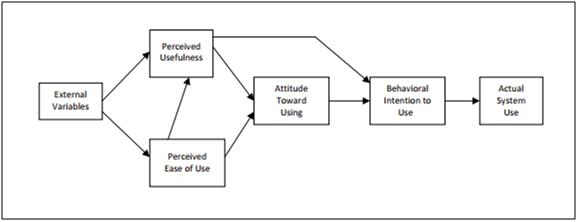Technology Acceptance Model (TAM) - Definition & Meaning
What is Technology Acceptance Model (TAM)?
The Technology Acceptance Model (TAM) explains how a new technology and the various aspects of it are received and used by the user. Though many models have been proposed previously in the field of Information Systems to describe the relationship, it is this model which has been widely acclaimed and used.
The model was proposed by Fred Davis and Richard Bagozzi by developing the Theory of Reasoned Action (TRA) which was formulated by Fishbein and Ajzen. According to the model, the acceptance of a new technology by a user is based on two factors:
- Perceived Usefulness – refers to how much the user believes that the technology will help to improve the performance/efficiency
- Perceived Ease of Use – refers to what extent the user is comfortable is using the features of the technology
These 2 factors then determine the attitude of the user towards using the technology. The model also goes on to say that the Perceived Usefulness will also influence the behavioral intention to use. The attitude determines the behaviour which in turn influences the actual acceptance. The diagrammatic representation of the model proposed by Davis in 1989 is given below:

The TAM has been developed continuously since 1989. TAM 2 was proposed in 2000 by Venkatesh & Davis. In TAM 2, the antecedent variables to the Perceived Usefulness were also established.
Hence, this concludes the definition of Technology Acceptance Model (TAM) along with its overview.
This article has been researched & authored by the Business Concepts Team. It has been reviewed & published by the MBA Skool Team. The content on MBA Skool has been created for educational & academic purpose only.
Browse the definition and meaning of more similar terms. The Management Dictionary covers over 1800 business concepts from 5 categories.
Continue Reading:
What is MBA Skool?About Us
MBA Skool is a Knowledge Resource for Management Students, Aspirants & Professionals.
Business Courses
Quizzes & Skills
Quizzes test your expertise in business and Skill tests evaluate your management traits
Related Content
All Business Sections
Write for Us